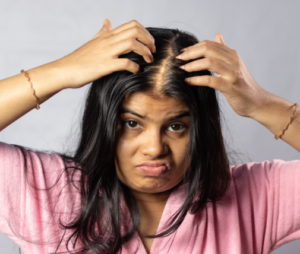Hair loss is a common concern for both men and women and finding effective solutions has been a longstanding goal in medical science. Over the years, researchers have explored various approaches to tackle this issue, including cloning and hair multiplication. These innovative techniques offer hope for individuals dealing with male-pattern baldness and other forms of hair loss. In this article, we will delve into the latest developments in the field, understand the causes of hair loss, and explore the potential of cloning and hair multiplication as future treatments.
Understanding Hair Loss
Before delving into the advancements in hair cloning, it is crucial to understand the causes and mechanisms of hair loss. Male-pattern baldness, also known as androgenetic alopecia, affects a significant number of men, particularly those of Caucasian descent. Around the age of 30, approximately one-third of white men exhibit signs of male-pattern baldness, with the prevalence increasing to around 50% by the age of 50.
Male-pattern baldness is characterized by the progressive shrinking of hair follicles, resulting in thinner and shorter hair strands. This process is influenced by a combination of genetic factors and hormones, particularly testosterone. Researchers have identified multiple genes that contribute to the development of male-pattern baldness, suggesting that inheriting certain versions of these genes increases the likelihood of experiencing hair loss.
Cloning: The Promise of New Hair Follicles
One approach that has garnered significant attention is hair cloning. This technique involves the extraction of cells from areas of the scalp that are resistant to balding. These cells, known as dermal papilla cells, are then multiplied in a laboratory setting and re-injected into the scalp. The hope is that these new cells will work in conjunction with skin cells to generate new hair follicles, ultimately leading to regrowth in balding areas.
Cloning and Hair Multiplication, an Update Understanding hair loss and its causes
Dear patient, one of the most frequent questions I get asked in the office is, “Doc, how long until they can clone hair?” It seems crazy that a sheep or dog can be cloned, and yet a simple hair follicle cannot. Below is an article on Fox News…
Scientists Fight Male-Pattern Baldness
NEW YORK – Look around a crowd, and you’ll see that lots of middle-aged men are losing their hair. As Baby Boomers, they have every right to demand, “What is science doing about this?” Quite a bit, it turns out.
A British company, for example, says five guys are walking around with hundreds more hairs than they had before, thanks to an early test of what’s been called hair cloning. An American outfit hopes to start testing a similar approach next year.
Other scientists are tracking down genes that make some men susceptible to hair loss, and struggling to understand the mysterious biology behind it. For example, how can men lose hair on the top of their heads while their beards and even eyelashes keep going strong?
Black men are far less susceptible, but about a third of 30-year-old white men have signs of what doctors call male-pattern baldness. By the time they’re 50, about half of them do.
The condition creeps across the head like three tiny armies bent on deforestation: one starting at the back, and two making inroads from the front.
Sure, some men say bald is beautiful. And others can smear on minoxidil (Rogaine) or take Propecia pills, or get hair transplants. In fact, right now is “the best time in history to be going bald, because there’s an awful lot of things that can be done,” says Dr. Ken Washenik of the Aderans Research Institute in Philadelphia, which is investigating the “hair cloning” approach.
But the drugs don’t help everybody, and not everyone is interested in a transplant. So there’s room for new approaches.
To understand the search for new treatments, it helps to know a little about hair and male pattern baldness. (Women can also get hormone-induced baldness like this, but it’s not clear if it’s really the same condition).
Everybody starts out with a lifetime supply of about 100,000 follicles on the scalp, each primed to produce a single hair shaft. Normally, any given follicle pumps out that shaft for two years to six years, then takes a break for a few weeks. Then it sheds that hair, and starts the cycle over again.
Each day, we lose about 100 hairs this way. No big deal; about an equal number of follicles enter the growth phase on the same day, and at any one time about 90 percent to 95 percent of the follicles are busy growing new hair.
But in some men, in selected places on the scalp, this orderly process goes awry.
The hair-growing phase gets progressively shorter and the resting phase gets longer. So the resulting hairs get shorter and shorter with each trip through the cycle. Eventually, they don’t even poke out through the scalp.
What’s more, affected follicles take longer to start growing hair again after they’ve shed the last one. And they shrink, so the hair they produce is finer.
In your head, it’s like replacing mighty trees with saplings. And the total number of remaining hairs slips by about 5 percent a year.
What causes this? The full picture isn’t known, but it clearly involves a combination of genetic susceptibility and hormones, including testosterone.
Researchers are eager to identify the biochemical actors within follicles that could be manipulated to fight baldness. As for genetics, some studies have implicated a particular gene that may be necessary to get the condition but not sufficient to produce baldness on its own, said Stephen Harrap of the University of Melbourne in Australia.
In all, it might take inheriting certain versions of about five genes to get the condition, like getting a bad poker hand, suggested Rodney Sinclair of the university.
Recent Breakthroughs in Hair Multiplication
Intercytex, a company based in England, has commenced human studies on hair multiplication. By extracting cells from the areas of the scalp resistant to balding, multiplying them thousands of times in a laboratory, and subsequently injecting them back into the scalp, Intercytex aims to stimulate the growth of new follicles. Preliminary studies involving seven men with thinning hair due to male-pattern baldness have shown promising results, with five of them experiencing hair growth.
Although the initial study was limited to a small area and did not cover bald spots, it demonstrates the potential of hair multiplication as a treatment option. With further research and development, hair transplant surgeons may be able to cover larger areas of baldness, providing individuals with a fuller head of hair.
The Future of Hair Loss Treatments
Hair cloning and hair multiplication techniques have shown tremendous potential in the field of hair loss treatment. Researchers are optimistic about the possibility of developing commercial products within the next five years. The ability to regenerate hair on a bald scalp may no longer be a distant dream, but a reality that individuals can choose to pursue.
Additionally, the advancements in hair follicle research extend beyond hair loss treatments. Hair follicles are considered organs, and the knowledge gained from studying them can contribute to the development of regenerative techniques for larger organs such as the liver and kidneys. Moreover, insights into stem cells, cell growth, and gene therapy garnered from follicle research may have broader applications in the treatment of diseases like cancer and Alzheimer’s.
Considering the Costs and Future Prospects
As with any pioneering medical advancement, questions arise regarding the cost of hair cloning and its accessibility. While the treatment remains in its developmental stages, specifics about hair cloning transplant cost and widespread availability in hair cloning clinics are yet to be fully realized. However, the potential benefits and promising outcomes may offset these concerns, making it an attractive prospect for individuals seeking long-term solutions to hair loss.
FAQs
What is meant by hair restoration cloning, and how does it work?
Hair restoration cloning refers to the process of using cloned cells, particularly dermal papilla cells, to restore hair growth in individuals experiencing hair loss. This technique involves replicating these cells in a controlled environment and then transplanting them to facilitate the growth of new hair follicles.
Are there specialized clinics that offer hair cloning procedures?
Yes, certain specialized clinics or research centers might provide experimental hair cloning procedures. These clinics often conduct trials or research studies related to hair cloning for individuals experiencing hair loss.
What are the expected results from a hair cloning procedure?
The anticipated outcomes from a hair cloning procedure can vary, but generally, it involves the potential growth of new hairs in previously bald or thinning areas. Early trials have shown promising results, with significant hair regrowth observed in treated individuals.
What factors determine the hair cloning cost and hair cloning transplant cost?
The costs associated with hair cloning and hair cloning transplant procedures can vary based on several factors. These may include the clinic or research institution conducting the procedure, the complexity of the treatment, the technology employed for cell multiplication and transplantation, as well as the extent of the balding area to be treated.
How does hair cloning for transplant differ from traditional hair transplants?
A hair cloning transplant aims to generate entirely new hair follicles by multiplying extracted cells. In contrast, traditional hair transplants involve relocating existing hair follicles from one part of the scalp to another.
What are the anticipated hair cloning results for bald individuals?
Anticipated results from hair cloning for transplant or treatment involve new hair growth in balding areas. Preliminary studies have shown promising outcomes, with significant hair growth observed in individuals who underwent experimental procedures involving cloned cells.
Conclusion
While the complete cloning of human hair follicles remains a challenge, the progress made in hair multiplication offers hope to individuals struggling with hair loss. Techniques involving the multiplication of existing cells show promise in generating new follicles and increasing hair growth. As research continues, the development of effective hair loss treatments may soon become a reality. By understanding the causes of hair loss and exploring innovative solutions, individuals can make informed decisions about their hair restoration journey.

















